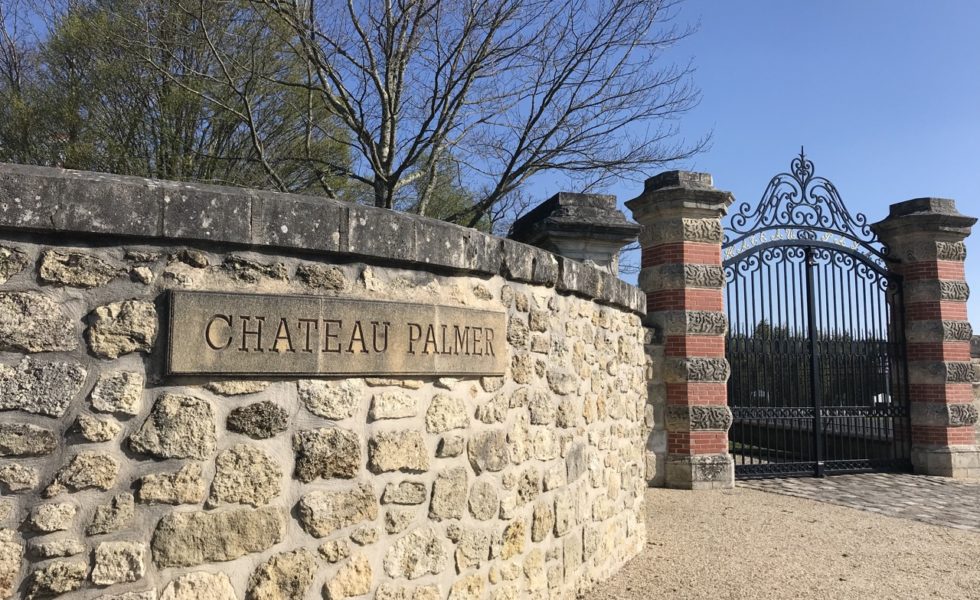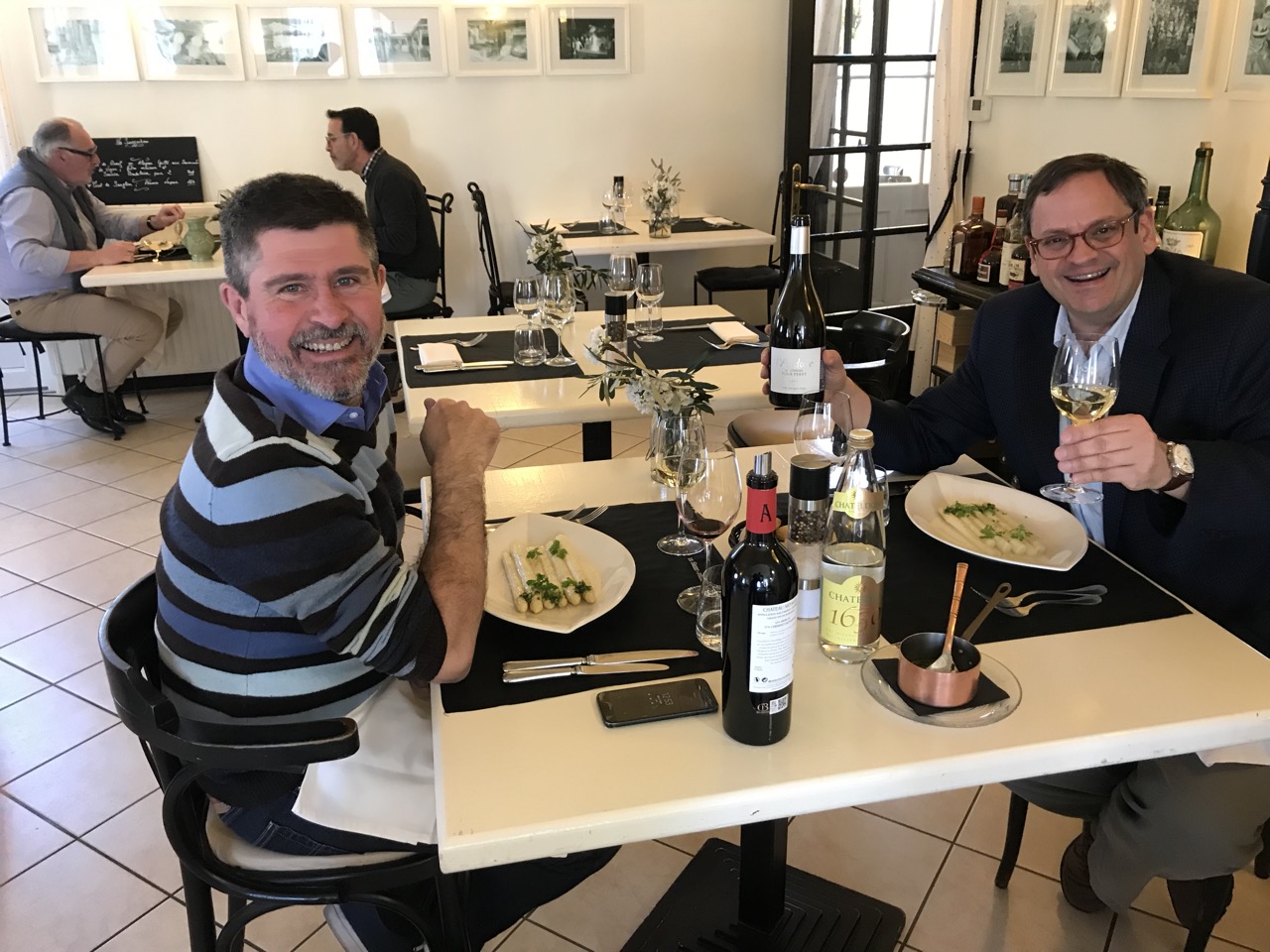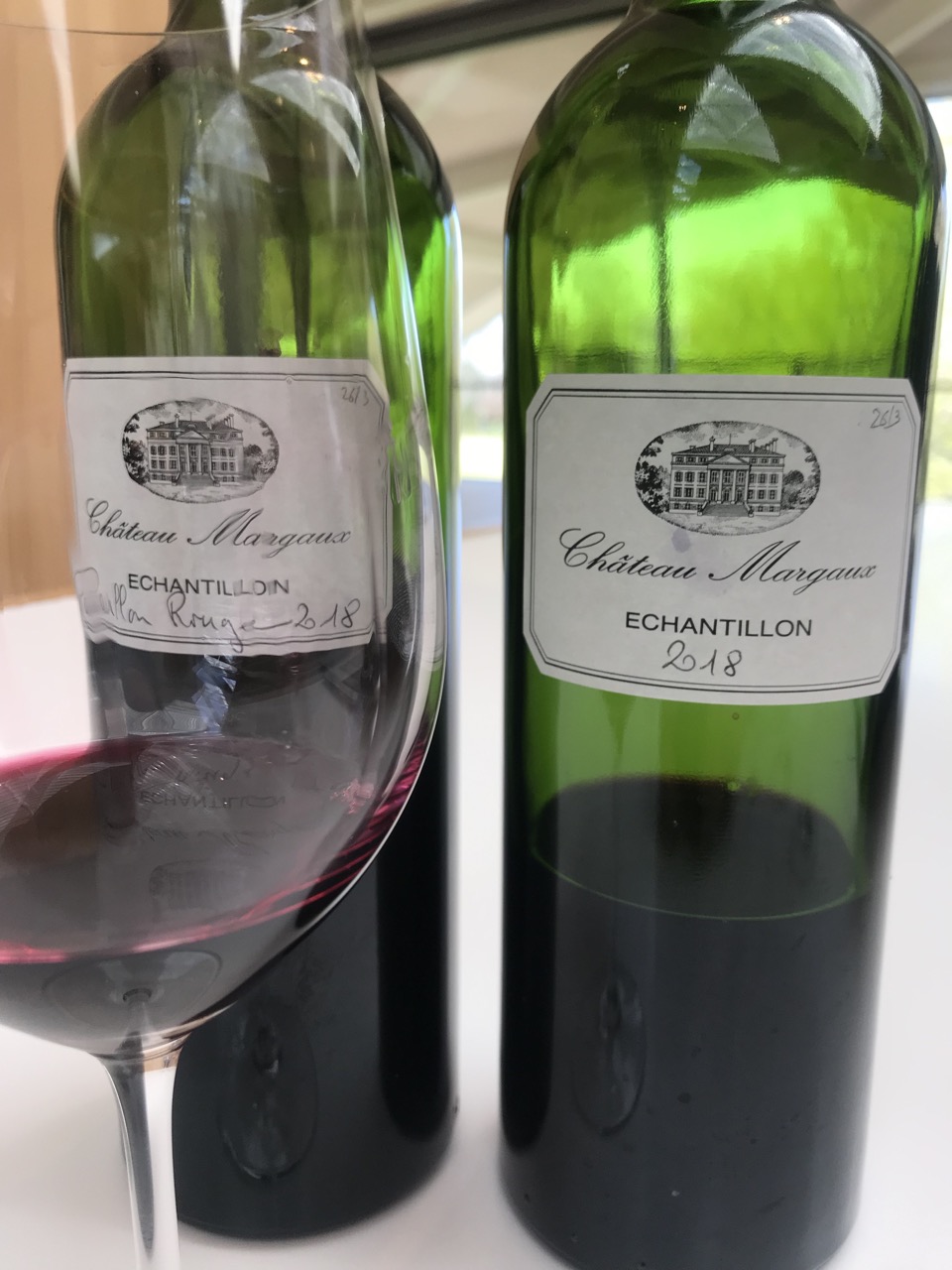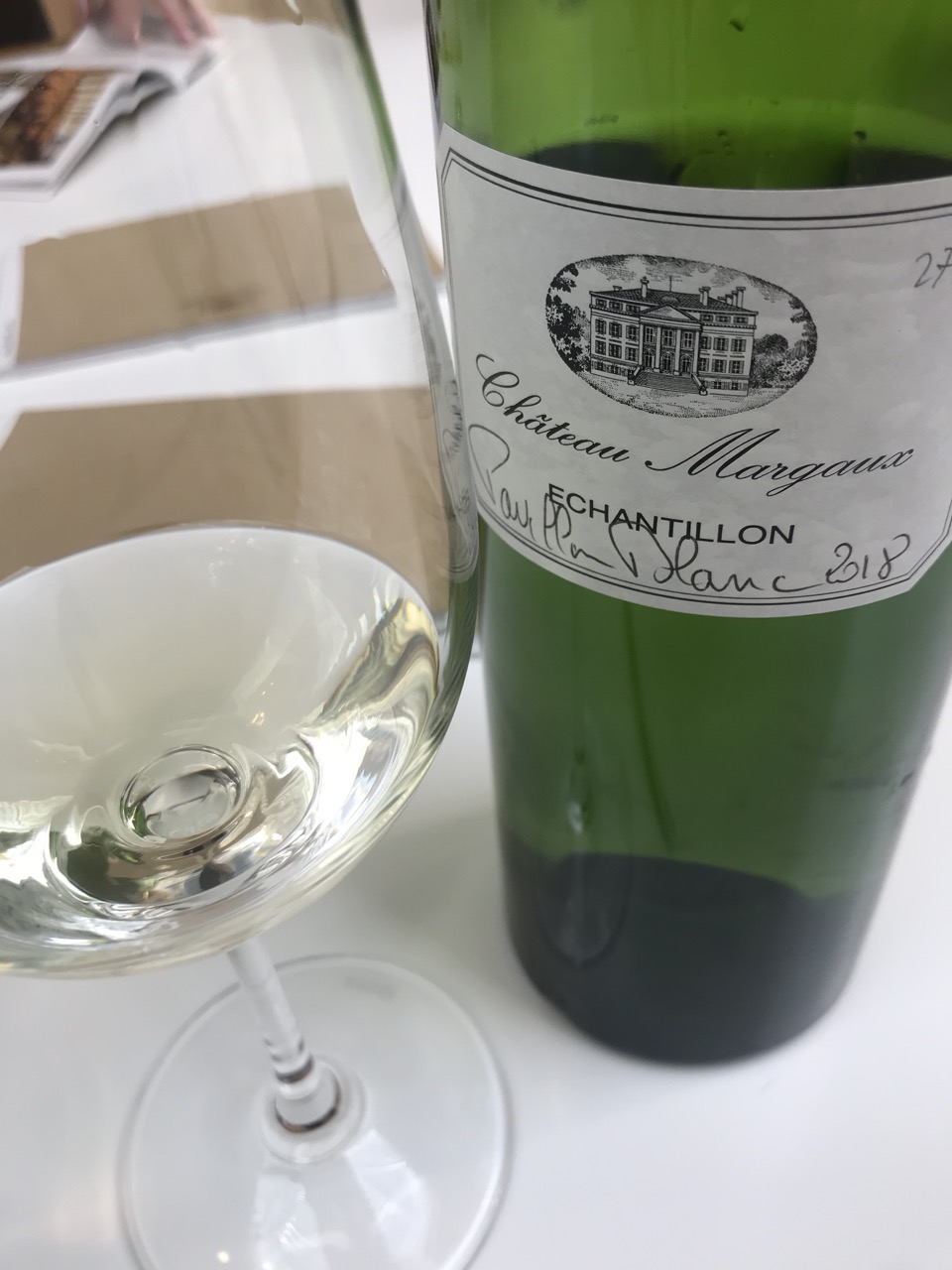First impressions of Bordeaux 2018 from barrel

Cautious optimism and Petit Verdot
By Panos Kakaviatos for wine-chronicles.com
(Dear readers, I have since published an update to this initial posting from late March 2019, here: https://wine-chronicles.com/blog/bdx18-barrel-hedonists/)
OK, this has been just a first day in Bordeaux – and many other writers and commentators have been here already for over a week to taste. But let me say a few words following a series of wines tasted with Christophe Coupez, an oenologist in Pauillac in the northern Médoc.
First off, I have rarely seen such high proportions of Petit Verdot in some of the wines I have tasted. Coupez explains that that is a grape that likes its “feet in the water and head in the sun,” so you did get that in 2018: lots of water in the winter and spring, followed by lots of sun – and dry weather – throughout most of the summer. Also as there were less of the other grapes, he added, the Petits Verdots (especially the clone 400) produced bigger grapes and rugged, too, so these were able to make up to some extent the quantity of production. They certainly added some spice and structure to some of the wines I tried from his lab.
Many have written of high alcohol levels and moderate to low pH levels in 2018, which made me think that we may be dealing with a 2009 (sounds great!) or even 2003 (sounds not really so great), but 2018 comes across unique and positively so, with the wines so far tasted, from humble €10 ($11) a bottle wines to the venerable Château Margaux (which I did not taste at Coupez’s lab, but at the château).

And why not all smiles? With Christophe Coupez at the excellent restaurant Saint Julien, lunching with white asparagus in season and excellent white Bordeaux. Oh, and the 2018, I understand, is a pretty darn good vintage, especially in the Médoc.
Before we get to the Margaux I tasted today, I would say that Château Belle-Vue (AOC Haut Médoc), just next to the famous Château Giscours of the Margaux appellation, proved lovely for the vintage, with robust opulence but freshness on the nose as well, really nicely balanced. There is a ripe Cabernet (48% of the blend) but also loads of expressive Petit Verdot (20%) with the Merlot at 32% lending some smooth tannin. Good mid palate sap here. 91-93. This estate also bottles a 100% Petit Verdot, which was impressive, but not as complex in expression as the flagship wine.
In some wines tasted, I did get an annoying drying aspect, perhaps coming from high alcohol Merlot aging too much new oak extracted tannin, so that there was this feeling at the finish that your palate was a bit parched. With 70% Merlot and noticeable new oak, Château Rollan de By, which I appreciate generally in cooler vintages, came up like that to some extent in 2018.

No, Bordeaux is not just about the expensive premium brands: this is an excellent wine from the very top part of the Médoc. About $10 a bottle if in the U.S.
But most wines I tried with Christophe – including several I had never tasted before – show the positive promise of the 2018 vintage.
Three examples include Château Lacombe Noaillac (AOC Medoc), which is located in the northernmost Médoc village. This blend is also high in Merlot at 60% (with 30% Cabernet Sauvignon, 8% Cabernet Franc, and the rest Petit Verdot), but the extractions seem more gentle and one has red fruit and more freshness, with juiciness on the mid palate, which finishes fresh and rather thirst quenching, beckoning more sips. The price tag? Easily less than €10 euros. The same owner of the above estate also makes a more Cabernet driven AOC Médoc, Chateau Chantemerle, also in the north, but not as high up. This blend of 60% Cabernet Sauvignon, 35% Merlot and 2% each of Petit Verdot and Cabernet Franc also is supple overall, with silky tannins albeit with a firmer Cab signature. There is some burgeoning mineral lead pencil aspect here that is delicious. Each of these wines easily gets an over 90 point score and deserve any bargain hunter’s attention.

Finally, I really enjoyed the Château Laffitte Carcasset (Saint Estèphe AOC), coming from a rather large 40-hectares vineyard. A lovely nose, fresh red fruit, all in finesse, and the palate is refined if a bit tight, but that is of course to be expected. The blend of 50% Cabernet Sauvignon, 47% Merlot and 3% Cabernet Franc is nicely balanced and smooth. Bravo! 90-92+
Massive mildew + organic winemaking = big challenges
Anyway, the vintage is marked as most readers know by one of the most virulent spells of mildew ever recalled by even the oldest of vintners in Bordeaux.
This cut into yields, especially at estates that work organically. Quite tragic in fact at Château Palmer, where director Thomas Duroux explained that the end result was one-third of the normal crop: just 11 hectoliters per hectare. “Yields like Sauternes”, quipped Bordeaux author and Decanter critic Jane Anson.
“It just kept raining,” he said.

Big challenge for Palmer in 2018, and the wine is superb!
So much so that Duroux was ready to abandon organic principles at one point to stem the mildew tide, but he and his team were betrayed by an inaccurate weather report in early July, when the berries on the vines were touching each other (bunch closure). The weather report predicted sunshine, so he decided not to opt for non organic treatments. But it rained. And the mildew spread.
For the first time since it was introduced, Château Palmer showed no Alter Ego to taste. Apart from about 10%, the entire harvest – very, very carefully selected with extra sorting tables – was used to make the first wine, Château Palmer. The selection was important to avoid any taste of desiccated, dry leaf: typical mildew-induced aromas in the wine.

Lower yields, less grapes, but loads of concentration and power, Duroux stressed. At first glance, I had the impression of tasting more a Pauillac than a Margaux, this blend of 53% Cabernet Sauvignon, 40% Merlot and … 7% Petit Verdot. But that was not really the case as it sat in glass, displaying deep, ripe cassis aromas and a taste sensation that proved more “deep and sensual” than forebodingly tannic.
It clocked in at 14.3 per cent alcohol, but I have seen higher from this estate, with high Merlot alcohol readings. Sure, the pH is high, at 3.83, but the wine came across balanced, and I am not using that term as a cliché or euphemism.
Duroux and his team are dubbing 2018 an “unprecedented vintage” with the potential of rivaling the mythical 1961.
Who knows? All I can say is that this barrel sample was more than just impressive for its concentration, but also Margaux in the sense that it conveyed elegant sensuality. This was not a structured barrel sample as in the 2005 vintage. It was not quite 2009, either.
Perhaps the dry extract of the wine, and its high tannic index, seem to make up for the lower than average acidity, yielding a wine that does not come across heavy. It seems that the concentration of the dry and hot summer – for the grapes not affected by mildew – brought forth a special wine that will be worth tasting again. 95-97+ points Bravo!

No surprises here: a great pair from the first growth Château Margaux
Château Margaux and the challenge of water stress
Just before tasting Château Palmer, I tasted the first growth Château Margaux, and the story was also successful, but in a different sense. Of course one gets more Cabernet Sauvignon at this estate, and the blend for the first wine included 90% Cabernet Sauvignon, with 4% each of Merlot and Cabernet Franc and 2% Petit Verdot. Director Philippe Bascaules also said selection was key, and his team decided to reduce the percentage of the first wine from 40% to 36% to make prices higher.
Just kidding. We are getting close to 1 April, however 😊 …
Actually, he explained that “fairly early in the winemaking, we understood that some of the vats were too tannic in expression (too tannic for Margaux elegance), and so we reduced the percentage of first wine to 36% of the harvest”.
Unprecedented water stress
Why too tannic you may be thinking? In addition to mildew challenges, Bascaules also brought up water stress, due to the lack of rain in the summer. He said that he had “never seen” such water stress before in his career: Typically water stress affects younger vines, but in 2018 “even 15 year old vines were affected”, he stressed, and it seems that the well-drained gravely soils may have been the most susceptible. And why water retaining clay not so much, as having been able to hold on to the rains earlier in the year. Then again, clay soils tended to yield more mildew, Bascaules explained, so was it between cholera and plague?
No, not really, considering that yields at Château Margaux proved a very respectable 31 hectoliters per hectare.
In any case, Château Margaux clocks in at 14% alcohol, and registers an IPT index of 83, which is very high, but I am not sure it is the highest ever at this estate. I loved the pure expression of fruit and almost sweet herbs that came forth with time in glass. Lots of depth and subtle power to the wine, but never armored in any way, as I was expecting, given Bascaules tannins talk.
As at Palmer, we have a Meisterwerk carried out by Margaux Meisters, so not such a surprise, eh?
In the silly contest between these top two Margaux, I give the slight edge to Château Margaux because it seems to bank more on nuance and elegance, but the styles are decidedly different. 95-98
But, hey? What about Pavillon Rouge? Did all that hard tannin go into the second wine? Sure the alcohol is higher at 14.5% and it has more Merlot in the blend at 19%, but what is interesting is the high 9% proportion of Mr. Petit Verdot! Rounded out with 3% Cabernet Franc and the taster experiences a rather fresh and deep wine, as well, although not as long and dense as its bigger brother. Really a lovely second wine in 2018. The impression one gets is a mix between the structure of 2005 and the opulence of 2009. 92-95

Perhaps the bigger surprise at this estate was how white peach delicious the white wine, Pavillon Blanc, turned out to be. The grapes were all picked in late August to preserve freshness and a 3.1 pH, so that the wine comes across far fresher than any taster would have expected. And those rains in July that we mentioned earlier? They helped retain enough freshness for the white wine here. OK, I did get a hint of tropical, but really just a hint. There is a juicy thirst quenching aspect to this wine the defies the vintage: one of the warmest ever. 92-94+
Thanks for reading. Coming back soon with more reflections after more tastings …
 Wine Chronicles
Wine Chronicles
Share This